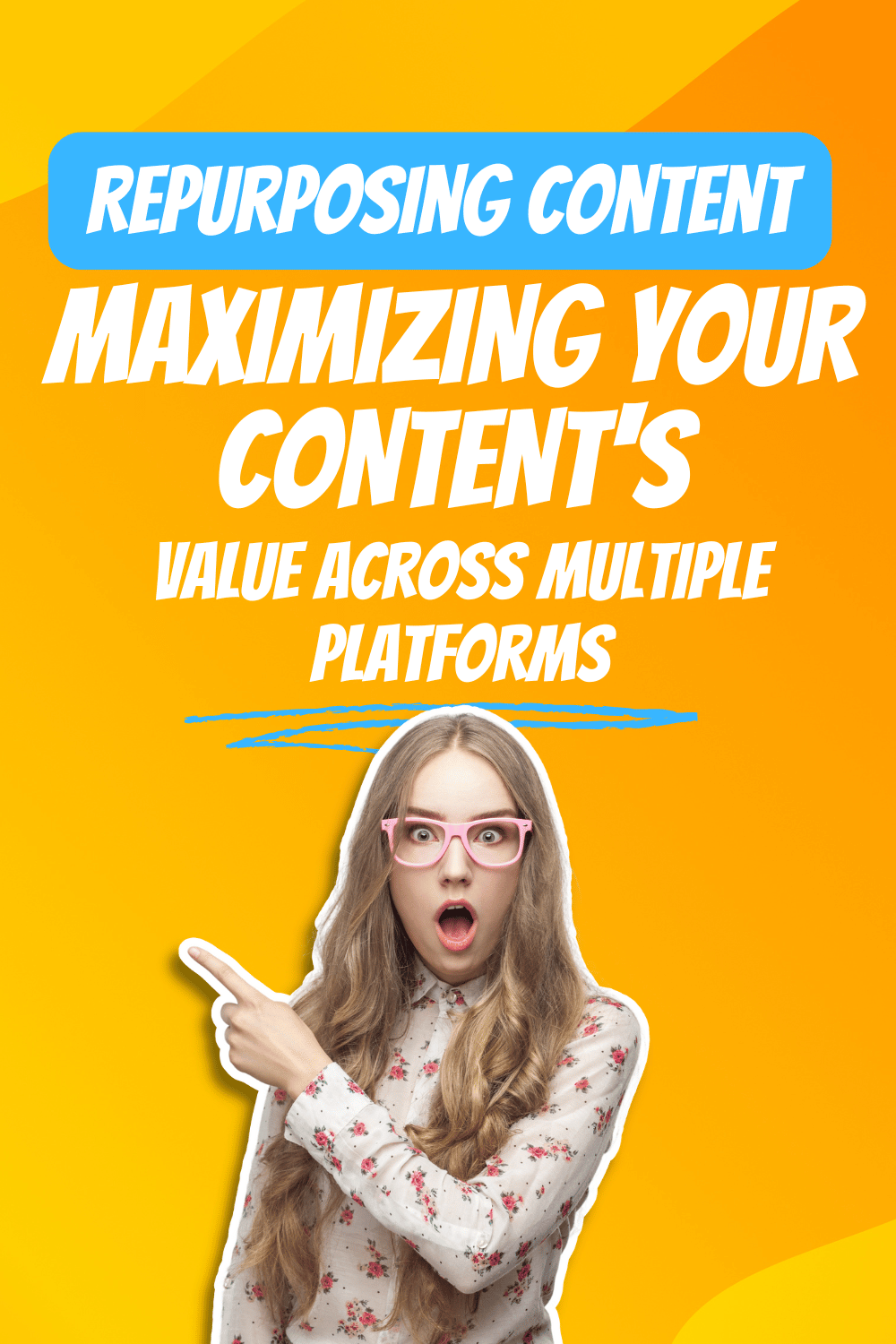Content creation can be a time-consuming process. As a content marketer, I’ve found that repurposing existing materials is an effective way to maximize value and reach a wider audience. Repurposing content involves adapting existing content into different formats or using it in new contexts to extend its lifespan and increase its impact.

By transforming blog posts into videos, podcasts into social media snippets, or eBooks into infographics, I can breathe new life into valuable information. This approach not only saves time but also allows me to connect with diverse audiences across multiple platforms. It’s a strategy that has helped me improve SEO, boost engagement, and get more mileage out of my best-performing content.
In this post, I’ll explore practical techniques for repurposing content effectively. I’ll share insights on identifying prime candidates for repurposing, choosing the right formats, and maintaining brand consistency across different mediums. Whether you’re a seasoned content creator or just starting out, these strategies can help you work smarter and amplify your content’s impact.
Understanding Content Repurposing
Content repurposing is a powerful strategy that allows marketers to maximize the value of their existing content. It involves transforming content into different formats and adapting it for various platforms to reach wider audiences.
Defining Content Repurposing
Content repurposing is the process of taking existing content and adapting it for different formats or platforms. I see it as a way to breathe new life into valuable content assets. For example, I might turn a blog post into a video, infographic, or podcast episode.
The key is to identify core ideas and messages that can be presented in fresh ways. This approach allows me to reach different audience segments who prefer various content types.
Content repurposing tactics can include breaking long-form content into shorter social media posts or combining related blog posts into an ebook. The goal is to extend the lifespan and impact of my original content.
Benefits of Repurposing Content
Repurposing content offers numerous advantages for content marketers. Firstly, it’s a cost-effective strategy that allows me to maximize the return on my content investment. By reusing existing material, I can reduce production costs and time.
It also helps me maintain consistency in messaging across different channels, reinforcing my brand’s key messages. This consistency can strengthen brand recognition and trust.
Repurposing can boost SEO efforts by creating multiple pieces of content around the same topic, potentially increasing my visibility in search results. It also allows me to cater to different learning styles and preferences among my audience.
Lastly, it helps me reach new audiences who might prefer different content formats or platforms, expanding my content’s overall reach and impact.
Strategies for Repurposing Content
Repurposing content involves creative approaches to maximize the value of existing materials. I’ll explore key strategies for identifying reusable content, adapting it for different platforms, and extending its reach across various mediums.
Identifying Evergreen Content
To repurpose effectively, I start by identifying evergreen content – material that remains relevant over time. I look for topics with enduring interest and pieces that have performed well historically. Analytics tools help me pinpoint popular articles, videos, or podcasts.
I focus on content that addresses fundamental questions or provides timeless advice in my industry. Evergreen pieces often cover:
- How-to guides
- Foundational concepts
- Case studies with lasting lessons
- Frequently asked questions
By selecting content with staying power, I ensure my repurposing efforts have long-term value. This approach maximizes the impact of my existing digital assets.
Content Adaptation for Different Platforms
Once I’ve identified suitable content, I adapt it for various platforms. This process involves reformatting and adjusting the message to fit each channel’s unique characteristics.
For social media, I might:
- Create bite-sized quotes for Twitter
- Design infographics for Instagram
- Produce short video clips for TikTok
When adapting blog posts for email newsletters, I focus on concise summaries and compelling subject lines. For webinars, I expand on key points and incorporate interactive elements.
This strategy allows me to reach wider audiences by transforming content for different formats. It also helps maintain brand consistency across channels.
Cross-Pollinating Content Across Mediums
Cross-pollinating content involves transforming it from one medium to another. This approach boosts reach and saves time by leveraging existing material in new ways.
Some effective cross-pollination techniques include:
- Turning blog posts into podcast episodes
- Creating video tutorials from written guides
- Developing e-books from a series of related articles
- Extracting key points from webinars for social media posts
I also consider reverse-engineering this process. For example, I might transcribe a popular podcast episode to create a blog post or infographic.
By repurposing across mediums, I cater to different learning styles and preferences. This strategy helps me engage a broader audience and reinforces key messages through multiple touchpoints.
Creating a Content Repurposing Plan
A well-structured content repurposing plan maximizes efficiency and impact. I’ll outline key steps to develop an effective strategy that aligns with your goals and resonates with your audience.
Setting Goals and Objectives
I start by defining clear, measurable goals for my content repurposing efforts. These might include increasing website traffic, boosting social media engagement, or generating more leads.
I set specific, time-bound objectives. For example, I aim to repurpose 3 blog posts into video content each month, targeting a 20% increase in YouTube subscribers over the next quarter.
I align my repurposing goals with broader marketing objectives to ensure consistency across channels. This strategic approach helps me focus on high-impact content that drives business results.
Audience Analysis
I conduct thorough audience research to understand preferences across different platforms. This informs my repurposing decisions and helps tailor content to each channel.
I analyze engagement metrics to identify top-performing content. This guides my selection of pieces to repurpose, focusing on what resonates most with my audience.
I create audience personas for each platform, considering demographics, interests, and content consumption habits. This helps me adapt my messaging and format to suit different segments.
Establishing a Workflow
I develop a systematic process for identifying, prioritizing, and repurposing content. This includes regular content audits to spot opportunities.
I create templates and guidelines for common repurposing tasks. This standardizes the process and ensures consistency across different team members.
I use project management tools to track repurposing tasks, deadlines, and responsibilities. This keeps everyone aligned and helps maintain a steady content flow.
I schedule regular team meetings to brainstorm creative repurposing ideas and review performance. This collaborative approach fosters innovation and continuous improvement in our repurposing strategy.
Implementing Content Repurposing
Content repurposing is a strategic approach to maximize the value of your existing content. I’ll explore effective techniques for adapting content across platforms, creating multimedia assets, and expanding reach through syndication.
Repurposing for Social Media
I’ve found that social media platforms offer diverse opportunities for content repurposing. To start, I break down long-form articles into bite-sized quotes or tips for Twitter or Instagram. Infographics work well on Pinterest and LinkedIn.
For Facebook, I create short video summaries of blog posts. On TikTok, I transform key points into entertaining short-form videos. I also repurpose customer testimonials into social proof graphics for all platforms.
When repurposing, I always optimize content for each platform’s unique features and audience preferences. This might mean adjusting image sizes, rewriting captions, or incorporating trending hashtags.
Multimedia Content Creation
I leverage existing written content to produce various multimedia assets. Blog posts often become the foundation for podcast episodes or YouTube videos. I expand on key concepts and add relevant examples to create engaging audio or visual content.
Webinars and presentations can be repurposed into SlideShare decks or downloadable PDF guides. I extract crucial data points from reports to design eye-catching infographics.
To enhance accessibility, I transcribe audio content into blog posts or articles. This maximizes the value of my original content while catering to different learning preferences.
Syndication and Aggregation Techniques
I use content syndication to amplify reach and visibility. I republish articles on platforms like Medium or LinkedIn Pulse, ensuring proper canonical tags are in place to avoid SEO issues.
Guest posting on relevant industry blogs allows me to repurpose and adapt existing content for new audiences. I carefully tailor the content to match the host site’s style and audience preferences.
I create content roundups by aggregating related pieces into comprehensive guides or resource lists. This approach provides additional value to readers and extends the lifespan of older content.
Email newsletters offer another opportunity for syndication. I repurpose blog content into digestible email formats, often including additional insights or exclusive offers for subscribers.
Measuring the Impact of Repurposed Content
Evaluating the effectiveness of repurposed content is crucial for optimizing your content strategy. I’ll explore key metrics and analysis techniques to gauge the success of your repurposing efforts.
Tracking Engagement and Reach
To measure engagement, I focus on metrics like likes, comments, shares, and click-through rates. These indicators reveal how well the repurposed content resonates with my audience. I use social media analytics tools to track these metrics across different platforms.
I also monitor reach by examining impressions and unique views. This helps me understand how many people my repurposed content is reaching compared to the original. A significant increase in reach suggests successful repurposing.
To assess the impact on my audience growth, I track follower counts and subscriber numbers before and after publishing repurposed content. Consistent growth indicates that my repurposing strategy is attracting new audience members.
Analyzing Content Performance Metrics
I delve deeper into content performance by examining time spent on page, bounce rates, and conversion rates. These metrics help me determine if repurposed content is effectively engaging my audience and driving desired actions.
I use content management systems to track how repurposed content performs compared to original pieces. This comparison allows me to identify which repurposing techniques are most effective for different types of content.
To measure SEO impact, I monitor changes in search rankings and organic traffic for repurposed content. Improvements in these areas indicate that my repurposing efforts are boosting my content’s visibility in search results.
Lastly, I track backlinks generated by repurposed content. An increase in high-quality backlinks suggests that my repurposed content is valuable enough for other sites to reference, enhancing my overall SEO strategy.








Comments (2924)